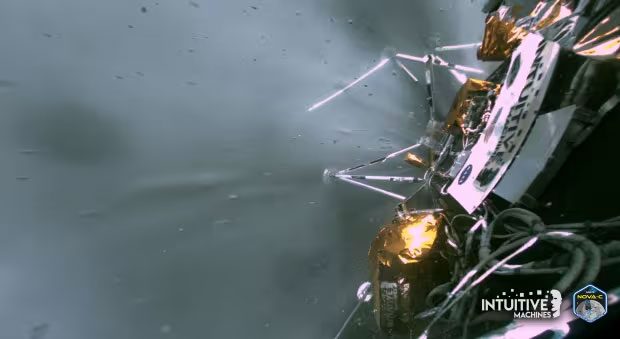Intuitive Machines announced that the unmanned lander Odysseus has failed to “wake up” and has become the first private spacecraft to “eternally sleep” on the Moon.

Image provided by Intuitive Machines on February 28, 2024, shows the Odysseus lander approaching the lunar surface. (Photo: AFP/TTXVN)
According to Intuitive Machines, the Odysseus lander has not connected with the operations center on Earth in the past week, despite experts predicting that the lander’s solar panels would accumulate enough sunlight to resume operations.
The Odysseus spacecraft landed at an angle when it touched down on the Moon on February 22. Despite the unfavorable landing conditions, Odysseus was able to complete several experiments and send back images captured on the lunar surface before being engulfed by darkness, forcing the lander to “go to sleep.”
One night on the Moon is equivalent to 14 nights on Earth. Intuitive Machines hopes that Odysseus may “wake up” after receiving sunlight again, similar to the extraordinary event when the SLIM spacecraft from Japan reactivated last month after landing upside down. However, that miracle did not happen.
On the evening of March 23, Intuitive Machines stated that after several days of waiting, operators confirmed that the electrical system of the Odysseus lander is no longer operational. The announcement from Intuitive Machines stated: “This confirms that Odysseus has permanently departed after making its mark in history as the first commercial lander to touch down on the Moon.”
Both Intuitive Machines and the National Aeronautics and Space Administration (NASA) have assessed that Odysseus successfully completed its mission, despite the challenges faced during the operation, including the lander flipping over upon landing.
The landing of the Odysseus spacecraft marks the first time a U.S. spacecraft has touched down on the Moon since the crewed Apollo 17 mission in 1972.
Intuitive Machines reported that the company invested approximately $100 million in the Odysseus lander, while receiving $118 million from NASA under a bilateral cooperation agreement aimed at returning U.S. astronauts to the Moon by the end of this decade.


















































